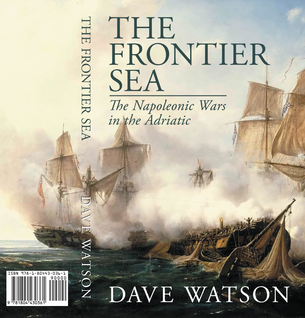First to Land!
|
Claymore 2023
Napoleonic Participation Game Scenario You are Captain William Hoste of the Royal Navy, commanding his Britannic Majesty’s forces in the Adriatic Sea. You are leading a British landing party consisting of marines, seamen, and a contingent of the 35th Foot in a dawn attack on the harbour. Your task is to capture the gun battery from the rear and hold the harbour long enough to capture the merchant ship docked there and sail it away. Intelligence reports indicate that the town is lightly garrisoned. However, you are taking no chances! The rules are a simplified version of Dan Mersey’s, Rebels and Patriots. Ideal for small battles like this. The figures are 28mm from several different ranges. Most of the buildings come from the Tablescape range, and the harbour build was featured in the April 2023 edition of Wargames Illustrated. Historical Battle The game is loosely based on a historical action at the harbour of Grado on 29 June 1810. Royal Navy Captain William Hoste had returned to the Adriatic in 1810, commanding a squadron that included the frigates Amphion, Active and Cerberus, and the sloop Acorn. They were so successful that prizes became scarce, so he and his captains made bold efforts to cut out ships from fortified harbours. One such attack was on the port of Grado, near Trieste. Hoste had heard that a convoy carrying naval supplies to Venice was sheltering under the protection of two ruined forts with a garrison of only 25 French troops. He assembled all the ships boats, although Active’s were delayed. They landed and marched towards the town covered by carronades in the ships boats. However, the estimate of the garrison proved inaccurate as a strong force of French troops and local militia debouched from the town and attacked the landing parties. The British marines and sailors fought off this attack and, supported by the arriving boats from Active, captured the town. As they were cutting out the convoy, the French launched a counter-attack which was also beaten off. Five prizes and 15 smaller craft were sailed to Lissa (modern day Vis), and 11 larger ships were burnt. You can read more in the book, The Frontier Sea: The Napoleonic Wars in the Adriatic, by Dave Watson. |



